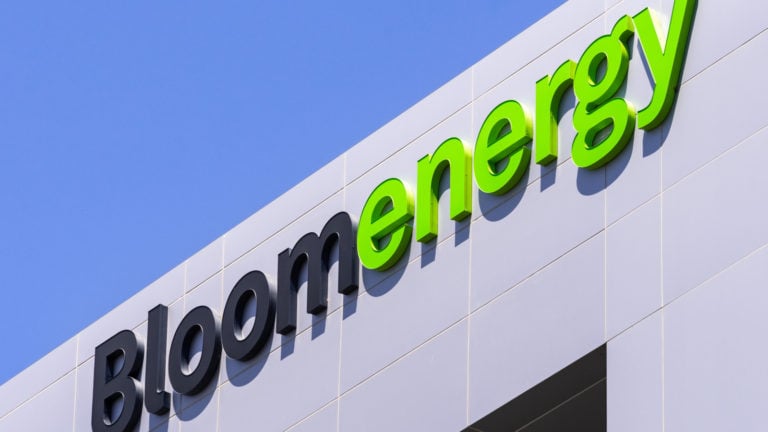Bloom Energy (NYSE:BE) stock is puzzling. Th company continues to grow its hydrogen fuel cell business but it has yet to see a profit.
The second quarter report is typical. Bloom announced on Aug. 3 that second quarter sales were up nearly 24%, compared to the same quarter a year ago. But there was still an operating loss of $54.5 million, and a net loss of 17 cents per share.
Analysts noted sales were $10.3 million short of estimates, and the loss of 3 cents/share was heavier than anticipated for BE stock. Shares are down 6% since the earnings came out.
A Closer Look at BE Stock
Unlike Plug Power (NASDAQ:PLUG), which focuses on making hydrogen from renewable sources and produces fuel cells for warehouse forklifts, Bloom focuses on low cost back-up power for data centers and utilities.
Bloom’s latest Electrolyzer, announced in July, claims to be 15-45% more efficient at using electricity to create hydrogen than competing products, by using a solid oxide.
Since 2020, this has resulted in 20% annual revenue growth. But profits have proven elusive. The best news in the latest report was a solid non-GAAP gross margin of 20%.
This let Bloom cut operating losses nearly in half, compared to a year ago. The company has also continued to raise cash. It had $767 million of it on the books at the end of June.
International expansion is also part of the strategy. Bloom recently highlighted a sale of 300 kilowatts of fuel cells to a German geothermal plant. Bloom calls this a move toward European energy independence.
While Plug Power focuses on pulling hydrogen from brine pools or using wind and solar power to power its electrolyzers, Bloom talks about “responsibly sourced” natural gas.
The industry calls this “blue hydrogen” and some analysts wonder why, in that case, hydrogen is necessary at all since you can just burn the gas. Bloom calls its gas “certified,” saying its approach reduces carbon dioxide emissions by 176,000 tons each year.
A Crowd Favorite
Bloom Energy has been making big promises since coming out of stealth mode in 2010. By that time, it had already raised $400 million and was a favorite of politicians and the Silicon Valley elite. Government subsidies helped it in the last decade, but the company remained viable after those expired.
The dream of cost-effective hydrogen gives fuel cell companies like Bloom a halo other energy companies lack.
Bloom has 14 analysts at Tipranks, 9 of whom tell investors to buy it, even with the stock down 16% this year. Our Muslim Farooque recently suggested buying Bloom, along with Plug Power and BP (NYSE:BP).
The stock is no longer priced as pure speculation, however. The market cap of $3.155 billion represents less than three times last year’s sales. Continuing growth, and falling losses, offer investors some real hope.
The biggest problem is that Bloom’s electricity still costs more to produce than that from coal or natural gas, about 15 cents per kilowatt hour. That’s why its latest Electrolyzer announcement is important.
The Bottom Line
Hydrogen has many use cases as an energy source. Cells produce water as their main pollutant, which is why Plug Power uses them to power forklifts. They’re quiet, which is the argument used by FuelCell Energy (NASDAQ:FCEL) when it sells back-up power to utilities.
But hydrogen also needs to compete on costs. That’s where Bloom is important. Its fuel cells use sand instead of precious metals. Betting that costs will continue to come down, and that renewable sources of power will continue to expand, is Bloom Energy’s brand.
Investors should keep their eyes on the bottom line, and hope it turns quickly from red to black.
As of this writing, Dana Blankenhorn did not hold (either directly or indirectly) any positions in the securities mentioned in this article. The opinions expressed in this article are those of the writer, subject to the InvestorPlace.com Publishing Guidelines.

